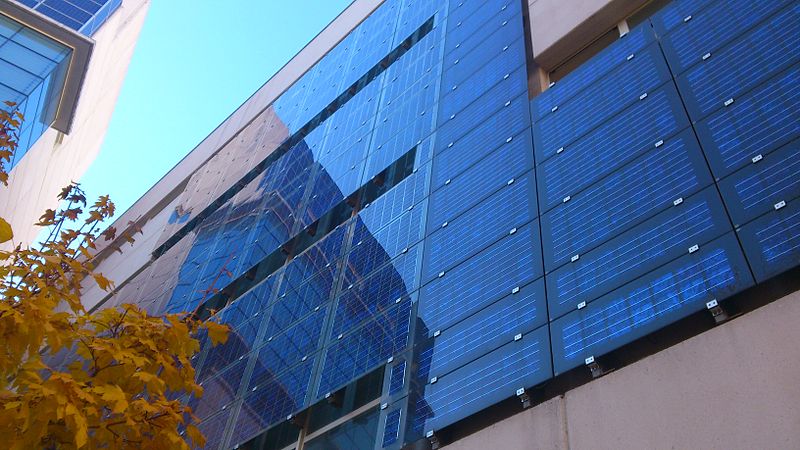Resiliency+: Renewable Energy Can Boost Grid Resilience in Vulnerable New Jersey
Resiliency+ is a new blog series, which highlights the ways in which different clean energy resources and technologies can play an important part in increasing energy resiliency in New Jersey and around the country. Check back every two weeks, or sign up to receive Energy Exchange blog posts via email.
 Renewable energy, such as solar and wind power, provides clean and sustainable power to our electricity grid. But it also offers other benefits beyond environmentally-friendly electricity. Renewable energy can increase energy resiliency by keeping the lights on, including at critical facilities in the wake of a natural disaster. That’s why it has the potential to play a particularly pivotal role in New Jersey, which is vulnerable to vicious storms such as Superstorm Sandy.
Renewable energy, such as solar and wind power, provides clean and sustainable power to our electricity grid. But it also offers other benefits beyond environmentally-friendly electricity. Renewable energy can increase energy resiliency by keeping the lights on, including at critical facilities in the wake of a natural disaster. That’s why it has the potential to play a particularly pivotal role in New Jersey, which is vulnerable to vicious storms such as Superstorm Sandy.
Renewable energy, unlike other forms of energy, is less vulnerable to sustained disruption. Other, more traditional forms of energy, such as fossil fuels, require an input (coal, oil and gas, etc.) that needs to be shipped, often via pipeline, to create electricity, leaving them vulnerable to a natural disaster that might interrupt transport. On the other hand, renewable energy has the ability to generate stable, on-site power from sources such as solar and wind when it operates from a microgrid. A microgrid can generate power both connected to and independently from the main, centralized grid. They can vary in size, providing power to several city blocks or to an individual home, but microgrids have the unique potential to “island” from the main electricity system. This is important during and/or in the wake of a natural disaster like Superstorm Sandy because this autonomous electricity system is able to power local buildings regardless of whether or not the main electric grid is down.
The potential for renewable energy to improve resiliency is vast, and the opportunities are global.
The United Nations recently proposed using local renewable energy in the Philippines after typhoon Haiyan, stating that, “renewable local energy systems, such as solar, micro- and pico-hydro or local biomass systems, are less vulnerable to disruptions, not to mention being more affordable to run and more environmentally sustainable.”
An Obama administration report last year also called for increased system flexibility and resilience in the form of microgrids, renewables, and energy storage (such as large-scale batteries), with the grid facing more power outages “as climate change increases the frequency and intensity of hurricanes, blizzards, floods, and other extreme weather events.”
In New Jersey, the state’s Action Plan likewise stated that “technologies such as combined heat and power, fuel cells, and solar with storage proved extremely resilient following Superstorm Sandy.” This was in marked contrast to conventional grid dependent resources. The plan noted: “even those critical infrastructure assets reliant on diesel generators for back-up power experienced electric reliability issues, due to limitations on the availability of liquid fuel.”
Although the upfront cost of solar – particularly that which can island and function when the power grid goes down – remains a challenge in New Jersey, the state enjoys significant potential and recent progress. Beyond the steadily decreasing cost of solar power and energy storage, the state has proposed an Energy Resiliency Bank, which will help to fund these kinds of projects, while also spreading up-front costs throughout the lifetime of the renewable energy resource. Likewise, the state’s strong renewable portfolio standard, which requires 4.1 percent of all electricity to come from solar power by 2028 and roughly 20 percent to come from other forms of renewable energy by 2021, is helping to drive adoption of renewable energy. As of March 2014, 1,491 megawatts of solar energy have been installed, enough to power over 200,000 New Jersey homes.
Despite this progress, more can be done in New Jersey to make the state resilient with renewable energy. Much of the renewable energy that exists (and that could be added) has the potential to be ‘islanded’, for example, but is not yet equipped to do so. Likewise, renewable energy in combination with storage can provide even greater resiliency, about which we’ll go into greater depth later in this series. Regardless, the path towards a more resilient and sustainable energy future in New Jersey should include renewable energy as part of a larger portfolio of clean energy assets. This, in turn, will better prepare the state for natural disasters and reduce power loss in the future.










